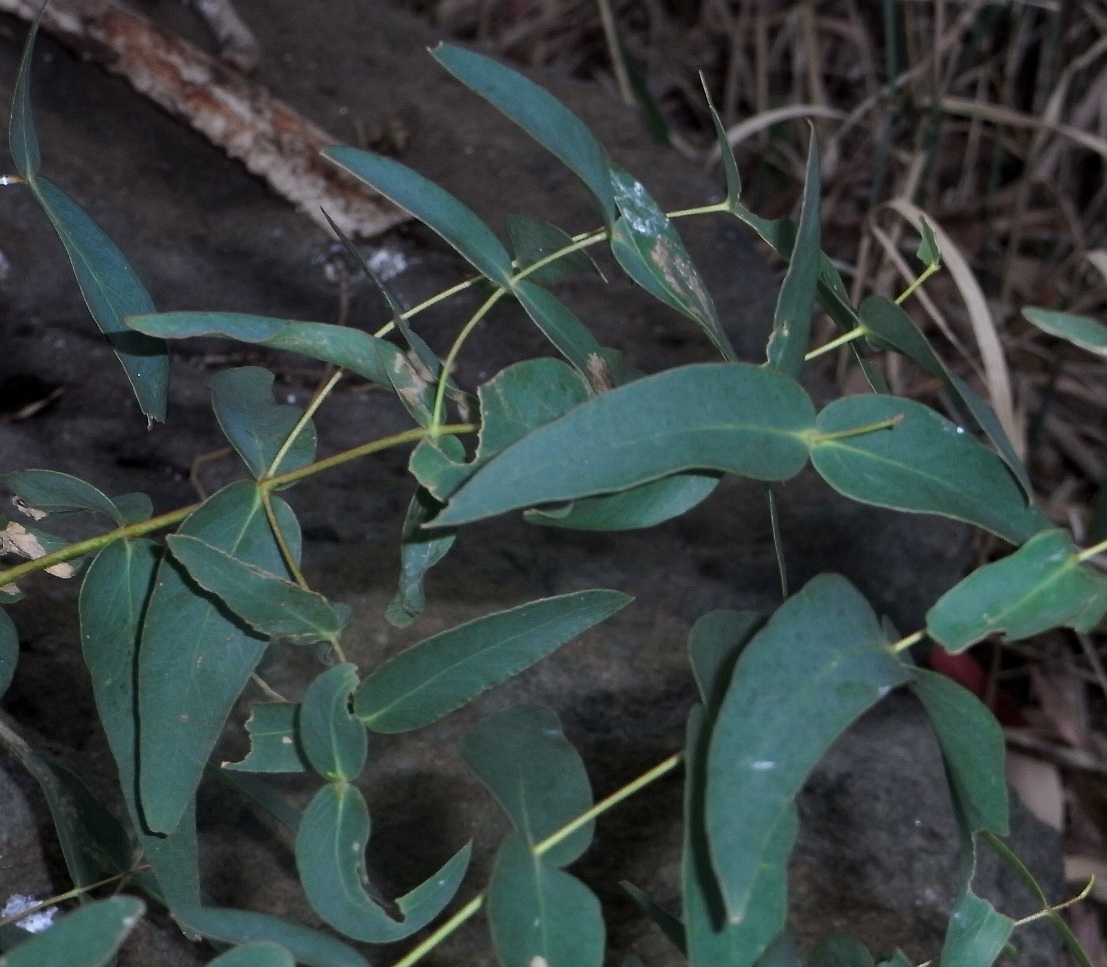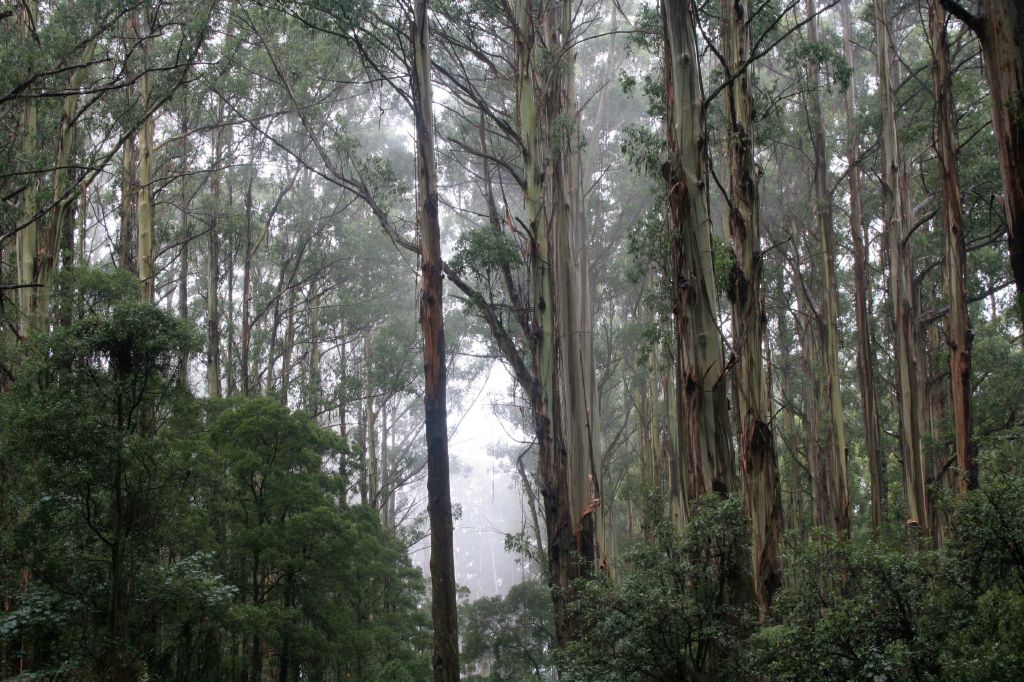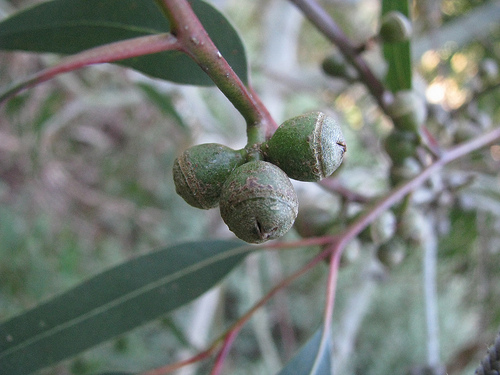There are 5 subspecies, 4 of which are found in Victoria. The species name viminalis means willowlike.
A tall tree, up to 40 - 50 m with smooth, white bark that peels in long ribbons. Rough at base.
Leaves
Adult leaves are long, narrow, bright green, glossy. Juvenile leaves are opposite, stalk-less, dull green, sword shaped.
Flowers
Not prolific, white flowers. Inflorescences (group of flowers) are axillary (arising from the meeting point of a leaf and a branch) on stalks 0.8 cm long, with 3 - 7 flowers per inflorescence.
Flower buds are oval to spindle-shaped, 5 - 9 mm long and 3 - 6 mm wide.
Fruits/Seeds
Cylindrical or ovoid, 4 - 8 mm long and 4 - 9 mm diameter, are released 3 - 8 weeks after maturity (early July to late March), heavy seeding every 2 - 3 years
Field Guide
Improve your identification skills. Download your Manna Gum field guide here!





